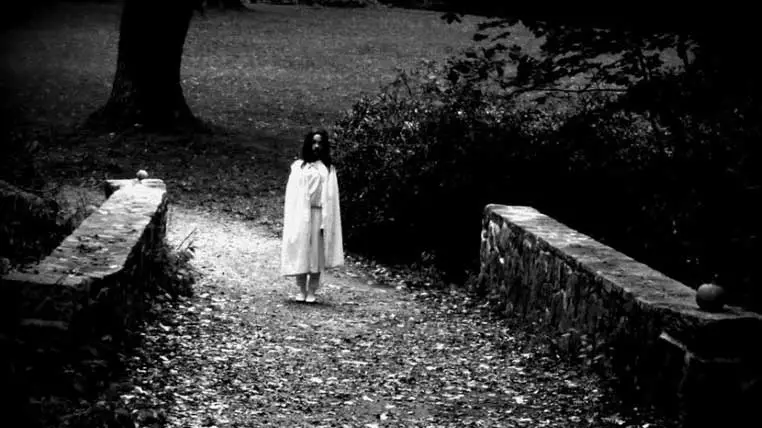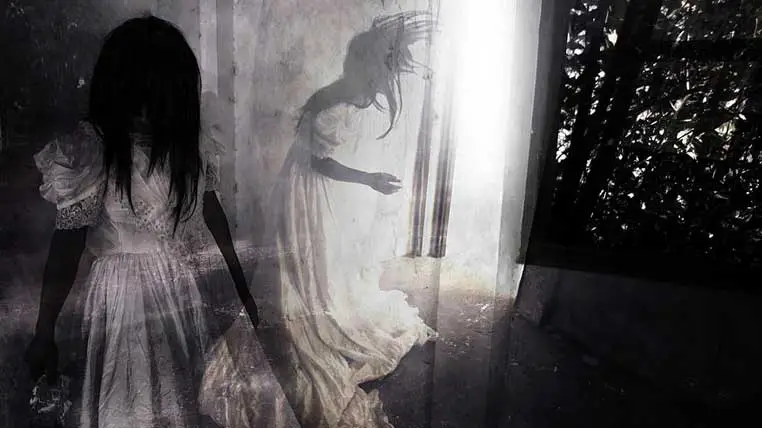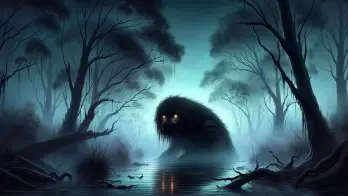These stories involve unusual, grotesque, frightening, or supernatural events that cannot be verified yet have gained wide circulation.
The idea of “urban legends” was introduced in 1968 by the renowned American folklorist Richard Dorson.
Dorson defined the concept as “modern stories that did not happen in reality but are told as if they were true.”
Author Jan Harold Brunvand significantly popularized the concept, often using it in his books. The first reference to such a story was in Brunvand’s book “The Vanishing Hitchhiker: American Urban Legends and Their Meanings,” published in 1989.
What Is an Urban Legend?
Many urban legends and horror stories originate in the misinterpretation or misunderstanding of stories by individuals who have heard or read about them in the press or from an authentic witness.
The only common element of urban legends is the assertion that the story always happened to someone else, most often “a friend of a friend.”
Urban legends have been amplified recently by the internet and the speed with which it enables information to circulate. From horror stories to unsolved murders, these urban myths continue to be transmitted like true mental viruses.
These chilling stories come in many different styles, with some of the most common including:
- Horror stories about allegedly cursed or haunted places;
- Legends about abandoned buildings, old ruins, or hard-to-reach places with strange or eerie appearances;
- Myths and tales about encounters with extraterrestrial beings;
- Organ trafficking stories (e.g., the Black Ambulance, the Black Volga);
- Legends about mysterious serial killers who were never identified or captured;
- Horror stories about unknown creatures or animals (very popular among Spanish-speaking communities in Argentina, Chile, and the United States);
- Legends about mythical creatures.
Urban legends are a reflection of society’s fears and anxieties. They provide insight into cultural values, norms, and the collective psyche of a community or society.

How Is an Urban Legend Born?
On March 30, 2002, the Pennsylvania state police issued an alert to citizens of the state, asking them not to believe any statements or reports about criminal acts due to the large number of hoaxes that had gained intense circulation through the internet.
The real story, known as “The Knockout Perfume Case,” was about several women allegedly anesthetized and then robbed by unidentified individuals after they smelled counterfeit perfume samples.
This story was transformed into a real urban legend about terrorists targetting and murdering women by sending them poisoned perfume samples through the mail.
To make things even worse, the legend altered again, turning into a horror story about Pennsylvania residents receiving in mail envelopes containing the anthrax virus.
As expected, the story generated a lot of hysteria and fear among residents, determining the police to issue the alert.
Folklorists who analyze the spread of such legends now study how alleged actual events in these myths can differ so much from the real news.
Essentially, urban legends are, in some way, similar to fake news – they have a well-developed narrative with a beginning, a believable story, and an open end that leaves to interpretation.
On the other hand, “urban rumors” are threatening accusations, assertions, and assumptions concerning individuals, religious groups, corporations, or political organizations.
To illustrate the difference between an urban legend and an urban rumor, let’s analyze the story from Pennsylvania.
“The Knockout Perfume Case” will always start by asserting that the story is true and happened to “a friend of a friend.”
It will continue by giving the witness’s name and describing how she unsuspectingly opened the package sent through the mail and smelled the perfume inside.
The story ends with the tragic demise of the victim.
On the other hand, an urban rumor will issue a simple warning: all Pennsylvania residents must be suspicious of packages from unknown senders or fake advertisers because of a number of cases in which terrorists endangered Americans with poisoned perfume samples.

What Are the Most Famous Urban Legends?
Urban legends are modern folklore, often spread by word of mouth, social media, and the internet.
They are stories told as if true but usually contain a kernel of falsehood or exaggeration. Many urban legends are scary or bizarre, often involving an element of danger or mystery.
Some of these legends have been circulating for decades, while others are relatively new.
Some of the most popular urban legends that continue to captivate our imaginations and spark our fears include:
- Bloody Mary
- The Hook
- The Babysitter and the Man Upstairs
- The Vanishing Hitchhiker
- The Killer in the Backseat
- The Licked Hand
- The Boyfriend’s Death
- The Clown Statue
- The Killer in the Mirror
- The Dare Game
- The Body in the Bed
- The Roommate’s Death
- The Mexican Pet
- The Call Is Coming from Inside the House
- The Black Volga
- The Dead Boyfriend
- The Choking Doberman
- The Elevator Game
- The Green Man
- The Girl with the Ribbon
- The Ghostly Hitchhiker
- The Girl in the Photograph
- The Phantom Car
- The Bus Station Ghost
- The Haunted House
- The Ghostly Bride
- The Slit-Mouthed Woman
- The Killer Clown
- The Haunted Doll
- The Cursed Phone Number
- The Red Room
- The Fatal Hairdo
- The Hairy-Armed Hitchhiker
- The Ghostly Soldier
- The Mannequin on the Roof
- The Deceased Bride
- The Ghostly Boy
- The Grinning Man
- The Screaming Bridge
- The Honeymoon Killer
Urban Legends vs. Actual News
The Pennsylvania State Police’s Criminal Investigation Bureau has released guidelines to help people distinguish between news and urban legends or rumors.
These guidelines are especially relevant in today’s world of social media, where rumors and hoaxes can spread quickly, causing panic and confusion.
The guidelines are as follows:
- If the story has a beginning, a continuation, an end, and a meaning, it is likely an urban legend;
- Suppose the story starts with the assertion that it is a real case that happened to a friend. In that case, it does not refer to the description of an authentic event;
- It is probably an urban legend if someone hears the same story or a similar one from multiple sources, but the details are different (for instance, other protagonists’ names);
- The story is probably false if there is no objective evidence to support the story or its assertions.
Urban legends and internet myths are a nuisance to law enforcement agencies as they often investigate such reports, which consumes their time, energy, and funds.
The FBI spokespersons have stated that there are no statistics on the number of hoaxes investigated.
However, after the terrorist attacks of September 11, 2001, almost every story involving poisons, anthrax envelopes, or other harmful substances mailed through the post was taken seriously and checked.
Many such stories are recycled, constantly renewed stories. A tale popular in the ’50s may be easily “reborn” as an urban legend.
Barbara Mikkelson, who administers the Urban Legend Research Center, advances the theory that such repetitions of old stories are made by people who heard them many years ago and were either terrified or amused by them and therefore want to retell them, putting their personal imprint on them.
In other cases, Mikkelson comments that many legends have been imagined by people who wanted “to appear better informed about a subject than they really were.”
These stories often spread because they are sensational, and people are likelier to share and believe them. Therefore, it is essential to fact-check any information before spreading it further.
At Ancient Theory we only use trusted sources to document our articles. Such relevant sources include authentic documents, newspaper and magazine articles, established authors, or reputable websites.
- Urban legend. wikipedia.org. [Source]
- Neil Dagnall, Andrew Denovan, Kenneth Drinkwater, Andrew Parker și Peter J. Clough - Urban Legends and Paranormal Beliefs: The Role of Reality Testing and Schizotypy.
- Mary Diane Cantrell - Urban Legends: Why Do People Believe Them?
- Matthew Hutson - The Strange Origins of Urban Legends.






